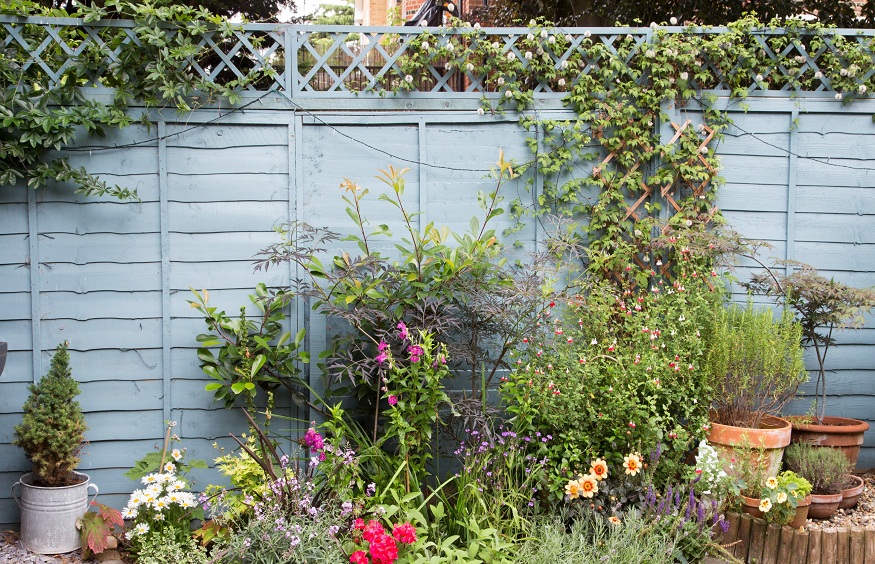A well-maintained garden hedge can transform an outdoor space into a green haven, providing privacy, property boundaries and protection from surrounding nuisances. However, choosing the right hedge varieties and caring for them requires some knowledge. Discover the pros’ tips for having a beautiful garden hedge, whether you’re a gardening novice or an accomplished gardener.
There are many varieties of hedges and green shrubs in the garden, so making a choice that is suited to your aesthetic preferences as well as the local climate can be complex. Between pruning, watering, fertilizing and fighting diseases and pests, it is important to get informed in order to make your life in the garden easier. The editorial team has gathered valuable advice from César Saint-Ouen, founder of Terrasse et Jardin de Paris, an agency specializing in the design, creation and maintenance of gardens, terraces, balconies and green spaces, as well as Pierre-Adrien Lagneau, head gardener and Truffaut garden expert.
A hedge suitable for every garden
When to plant a garden hedge?
Planting your shrubs in the fall or early spring allows you to avoid months with climates that are too hot and dry or, on the contrary, too cold. Avoiding both frost and heatwaves facilitates the growth of the shrub and makes working in the garden more peaceful, since the soil is less hard.
Pierre-Adrien Lagneau’s advice : opt for a rustic hedge and not a monoculture.
Planting a hedge made up of different varieties of shrubs – also called a country hedge – has many advantages. Mixing plant species, in addition to the aesthetic aspect, is a real plus for biodiversity in the garden. The different varieties of shrubs “provide shelter and food for a whole bunch of small animals, and a changing decor, rich colors in the garden” adds garden expert Truffaut. He also advises mixing the types of foliage: combining deciduous and evergreen foliage allows you to have a leafy hedge all year round despite the extreme cold . Finally, Pierre-Adrien Lagneau recommends planting these different shrubs in a staggered pattern and not in a straight line.
Here, a monoculture hedge of Photinia, a shrub with evergreen green and red foliage.Here, a monoculture hedge of Photinia, a shrub with evergreen green and red foliage.Terrace and Garden of Paris
On the contrary, the choice of monoculture opens the door to the installation of various diseases. These are more common in a uniform hedge, whether it is a fungal attack, mushrooms or even a dieback of conifers. It then becomes difficult to get rid of them.
Having seen this phenomenon on various projects, César Saint-Ouen emphasizes the importance of leaving the necessary space for the hedge to develop properly. A hedge leaning against a wall or a fence needs air and light: it is therefore recommended to leave between 10 and 20 cm at the back of the hedge.
Even in a small garden, it is important to leave space between the hedge and the wall so that it can grow comfortably.Even in a small garden, it is important to leave space between the hedge and the wall so that it can grow comfortably.Terrace and Garden of Paris
Know your garden to select the ideal variety
To select the right varieties for your future garden hedge, you must first take into account the nature of the terrain. This study increases the chances of a thriving hedge. It is therefore important to pay attention to the exposure, the nature of the soil, but also the climate. The Truffaut expert explains: “Plants that thrive on the seaside or in mountainous areas do not necessarily find their place elsewhere. For example, varieties from Australia or New Zealand often thrive in Mediterranean climates , due to a dry and mild climate in winter.”
The ideal is to turn to endemic plants, local species with characteristics already adapted to the environment. “The easiest thing is to ask your neighbors, rather those with gardens that have already lived well and not new constructions. Their advice will be very valuable for creating a garden with appropriate varieties,” explains Pierre-Adrien Lagneau.
César Saint-Ouen’s advice : turn to the “Plante Bleue” label.
Regardless of the variety chosen, the founder of the company Terrasse et Jardin de Paris recommends turning to the “Plante Bleue” label which identifies French horticulturists and nurserymen committed to a social and environmentally friendly approach. These plants grow in open ground and do not face chemicals. Subsequently, placed in pots, these plants have advantages over others, they are more resistant.
How to choose from the many varieties that make up a hedge?
Hedges made of evergreen plants retain their greenery throughout the year, even during the coldest seasons. This means that you can enjoy constant privacy without worrying about falling leaves. Commonly used varieties are cypress, laurel, boxwood and thuja.
César Saint-Ouen points out that, in recent years, boxwood has been planted less frequently due to diseases. Today, it is better to opt for an Ilex crenata, also called crenellated holly. This variety between boxwood and holly is a non-prickly ornamental shrub, typical of traditional Japanese gardens. Crenellated holly is vigorous, it likes cold winters and relatively mild summers.
Cypress is a popular choice because of its dense foliage and ability to grow quickly. It forms a dense, vertical hedge that provides excellent protection from prying eyes. Laurel, with its glossy, broad leaves, also creates an effective visual barrier, in addition to giving off a pleasant scent. “All those called laurel are occulting: noble laurel, laurel-tin, rose, cherry or even Portuguese, the variations are numerous,” explains Pierre-Adrien Lagneau.
Other varieties with evergreen foliage are also relevant in the garden, such as the Photinia and its recognizable red foliage, but also the Strawberry Tree and its little-known orange fruits.
In addition to breaking up the view, evergreen garden hedges act as a natural sound barrier, reducing unwanted noise from outside.

